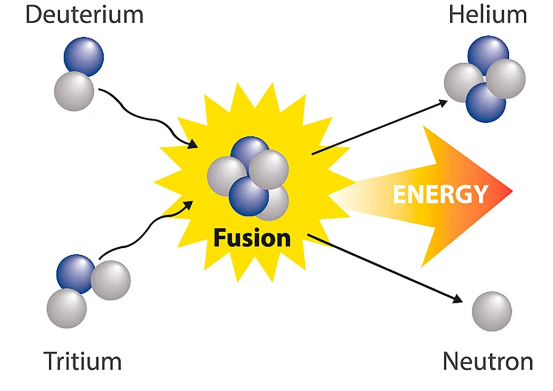Nuclear Fusion
A nuclear reaction in which the nuclei of two atoms fuse to form another element. In nature, it happens in stars

INFO
In order for nuclear fusion to occur, the fusing nuclei must have enough kinetic energy to overcome the repulsive electrostatic force between them
Nuclear Stability
The higher the binding energy, the more stable the nucleus is. (iron-56 is the most stable, with the most tightly bound nucleus).

Usually hydrogen is used for fusion while Uranium is used for fission
| Heavier Nuclei | Light Nuclei |
|---|---|
| Most likely to undergo Nuclear Fission because binding energy increases | Most likely to undergo nuclear fusion because binding energy increases |
| Products are more stable than the reactant | Product is more stable than reactants |
Fusion Processes
Proton-Proton Chain
Four hydrogen nuclei fuse to form one helium-4 atom Occurs in stars the of our sun and smaller
Nucleosynthesis
The process of forming larger elements from smaller ones via nuclear fusion is known as nucleosynthesis.
Carbon-Nitrogen-Oxygen Cycle
Occurs in stars that are significantly larger and hotter than the Sun A carbon-12 nucleus undergoes a number of nuclear reactions involving fusion and decay.